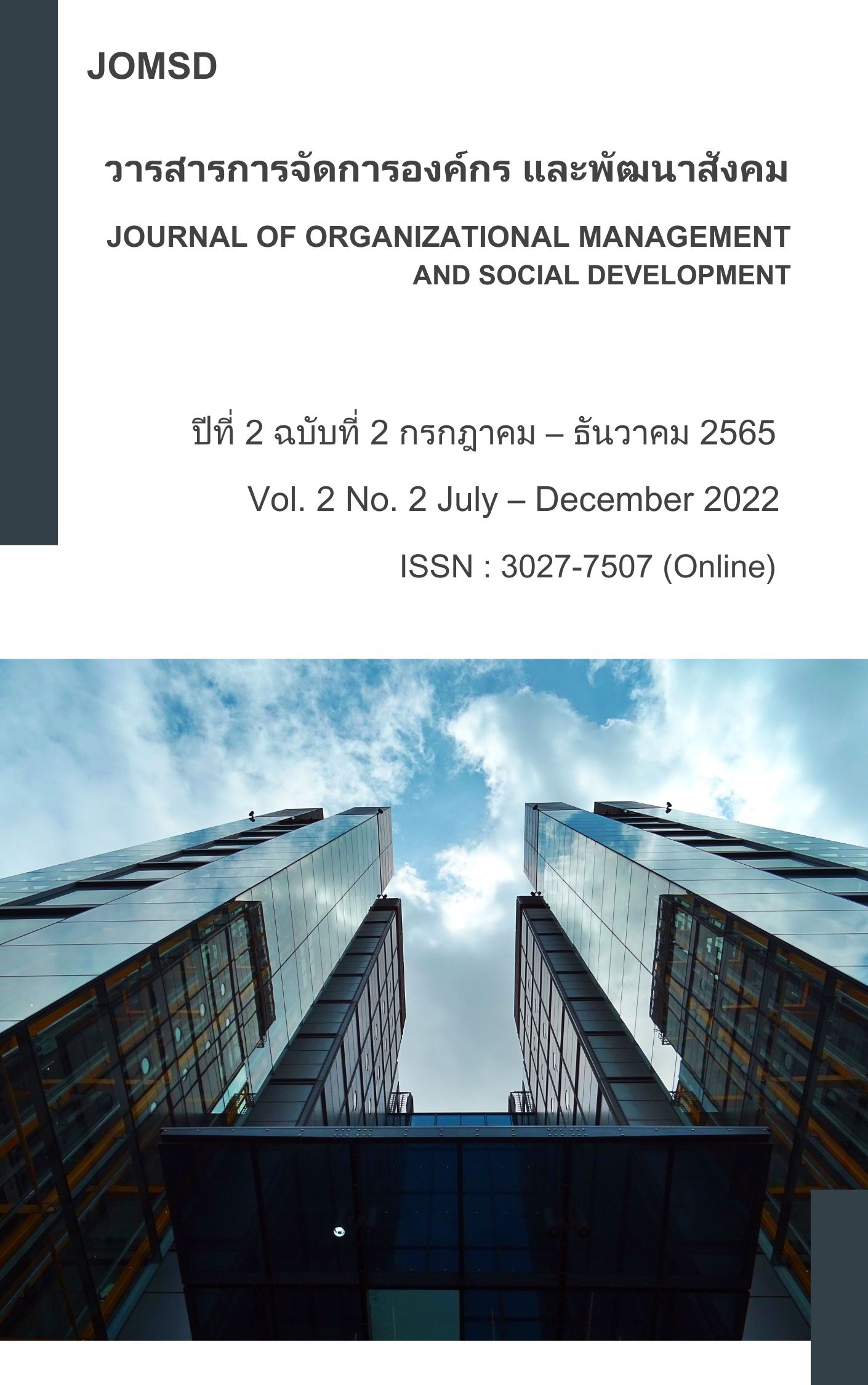Development of Social Mechanisms to Reduce Drug Problems in The Community with Participation: Houses, Temples, Schools (Bowon), Ban Nong Chan, Suvarnabhumi District, Roi Et Province
Main Article Content
Abstract
The objectives of this research are 1) to study the context in solving and preventing drug problems according to the roles of homes, temples, schools in the community, 2) to synthesize factors that influence solving and preventing drug problems, 3) to study and develop mechanisms. Socially to reduce drug problems in the community through participation Ban Wat School (Bowon), Ban Nong Chan, Suvarnabhumi District, Roi Et Province. This study is qualitative research. Research tools include in-depth interviews, the target group is the village headman, assistant village headman, sub-district headman, people in the area, teachers, monks, and police. The data was then analyzed in a content-based manner. The results of the study found that: 1) The results of the development of social mechanisms to reduce drug problems in communities with participation in houses, temples, schools (Bowon) found that drugs cause society to deteriorate and society hates it. This is because addicts do not work, do not study, causing trouble and creating problems for society. There was a rift between the group of drug users and the normal group of people. But when a problem arose, everyone in society did not neglect to try to find a solution through various methods. Whether it is monitoring and helping to talk to find solutions together. 2) Factors that influence the development of social mechanisms to reduce drug problems in communities with participation. It was found that the development of social mechanisms to reduce drug problems in communities with participation, houses, temples, schools (Bowon) are: Education, training, socialization, environment. 3) Guidelines for developing social mechanisms to reduce drug problems in communities through participation in houses, temples, and schools (Bowon). It was found that solutions should be used in the form of participation, by relying on cooperation from all sectors Both the public and private sectors, but there will be adjustments according to each environment of that community. that there is a problem in which part, but in area there is the strength of the community, so there is good cooperation.
Article Details
References
คณะรักษาความสงบแห่งชาติ. (2557). ประกาศคณะรักษาความสงบแห่งชาติ. สืบค้นจาก http://www.ratchakitcha.soc.go.th/DATAPDF/2561/E/239/T_0059.PDF.
เจิมศักดิ์ ปิ่นทอง. (2527). การระดมประชาชนเพื่อการพัฒนาชนบทในการบริหารงานพัฒนาชนบท. กรุงเทพฯ: โอเดียนสโตร์.
ธนกฤต อั้งน้อย. (2564). แนวทางการป้องกันปัญหายาเสพติดอย่างยั่งยืน ด้วยรูปแบบบ้าน วัด รัฐ โรงเรียน. สืบค้นจาก https://journal.mcru.ac.th/multim/pdf/02/Article%20Online%2033979.pdf.
ปฬาณี ฐิติวัฒนา. (2545). การพัฒนาเด็ก เยาวชนและสตรี. กรุงเทพฯ: โรงพิมพชุมนุมสหกรณการเกษตรแห่งประเทศไทย.
ไพรัตน์ เตชะรินทร์. (2527) การมีส่วนร่วมของประชาชนในการพัฒนาชุมชน กรุงเทพฯ: โรงพิมพ์ไทยวัฒนาพานิช.
ภูวณัฐสร์ หนูมาก. (2549). กระบวนการการมีส่วนร่วมของบ้าน วัด โรงเรียน (บวร) ต่อการพัฒนาโรงเรียนวิถีพุทธ. (สังคมสงเคราะห์ศาสตรมหาบัณฑิต, มหาวิทยาลัยธรรมศาสตร์).
สุพัตรา สุภาพ. (2538). ปัญหาสังคม. กรุงเทพฯ: ไทยวัฒนาพานิช.
เสรี พงศ์พิศ. (2548). แผนแม่บทสู่วิสาหกิจชุมชน. กรุงเทพฯ: เจริญวิทย์การพิมพ์.

